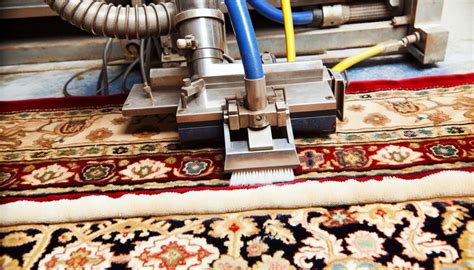Protect Your Investment: Cleaning Area Rugs on Wood
Area rugs add warmth, style, and comfort to hardwood floors, but their presence also introduces a unique cleaning challenge. Protecting your investment – both the rug and the wood flooring beneath – requires a thoughtful approach. Improper cleaning can damage delicate fibers, leave unsightly stains, or even harm your beautiful wood. This guide provides expert advice on safely and effectively cleaning area rugs on wood floors, ensuring both remain in pristine condition.
What Type of Area Rug Do You Have?
Before diving into cleaning methods, it’s crucial to identify your rug’s material. Different fibers require different cleaning techniques. Knowing your rug's material is the first step in protecting it.
- Wool: Wool rugs are luxurious but sensitive. They require gentle cleaning to avoid shrinkage or damage.
- Cotton: Cotton rugs are durable and relatively easy to clean, but they can be prone to staining.
- Silk: Silk rugs are delicate and require professional cleaning. At-home cleaning is generally not recommended.
- Synthetic: Synthetic rugs (e.g., nylon, polyester) are often the most durable and easiest to clean, often tolerating more aggressive methods.
How Often Should You Clean Your Area Rug?
Regular maintenance is key to preventing deep-seated dirt and stains. The frequency of cleaning depends on foot traffic and the rug's location. High-traffic areas may require more frequent cleaning than less-used rooms.
- Vacuuming: Vacuum your rug at least once a week, preferably with a suction-only vacuum cleaner (avoid beater bars which can damage fibers). Pay special attention to high-traffic areas.
- Spot Cleaning: Address spills and stains immediately using appropriate methods depending on the rug material and stain type (more on this below).
- Deep Cleaning: Professional cleaning is recommended at least once a year, or more often for high-traffic rugs.
How to Clean Area Rugs on Wood Floors Safely: Methods & Techniques
Several methods exist for cleaning area rugs on wood floors, each suited to different levels of soiling and rug materials.
1. Vacuuming: The Foundation of Rug Care
Regular vacuuming is your first line of defense against dirt and debris. Always vacuum before attempting any other cleaning method. Use a vacuum cleaner with a suction-only setting to prevent damage to the rug fibers. For plush rugs, consider using a low-pile setting or a specialized rug cleaning attachment.
2. Spot Cleaning: Tackling Specific Stains
For minor spills or stains, spot cleaning is often sufficient. Always test any cleaning solution on an inconspicuous area of the rug first to ensure it doesn't cause discoloration or damage.
- Blot, Don't Rub: The most important rule for stain removal is to blot, not rub. Rubbing can spread the stain and damage fibers.
- Gentle Cleaning Solutions: Mild dish soap diluted in water, or a specialized rug cleaner, are often effective for many stains.
- Specific Stain Removers: For tougher stains like wine or pet accidents, specialized stain removers are available, but always follow the manufacturer's instructions carefully.
3. Professional Rug Cleaning: When to Call the Experts
For heavily soiled rugs or rugs made of delicate materials like silk, professional cleaning is highly recommended. Professional cleaners have the expertise and equipment to safely and effectively clean your rug without causing damage. They can also identify and address any underlying issues that may require specialized attention.
4. Steam Cleaning: A Powerful Option (Use with Caution)
Steam cleaning can be effective for removing deep-seated dirt and grime, but it’s essential to use caution. Excessive moisture can damage both the rug and the wood floor beneath. Always follow the manufacturer's instructions carefully and avoid over-saturation. For delicate rugs, steam cleaning is generally not recommended.
Protecting Your Wood Floors During Rug Cleaning
While focusing on the rug itself, remember to protect your hardwood floors:
- Proper Ventilation: Ensure adequate ventilation during cleaning to prevent moisture buildup.
- Protective Padding: Using a rug pad can prevent the rug from scratching the wood floor and can improve its longevity.
- Immediate Drying: After cleaning, ensure both the rug and the floor are completely dry before replacing the rug.
What if my area rug is shedding?
Shedding is common, especially with new rugs. Regular vacuuming helps to minimize shedding. However, excessive shedding might indicate a problem with the rug's construction. Contact the manufacturer or retailer if shedding is excessive or persistent.
How do I remove pet stains and odors from my area rug?
Pet stains and odors require prompt attention. Use an enzymatic cleaner specifically designed to break down pet stains and eliminate odors. Thoroughly blot the area and allow it to dry completely. For stubborn odors, professional cleaning may be necessary.
Can I wash my area rug in a washing machine?
Washing an area rug in a washing machine is generally not recommended, unless it is specifically designed for machine washing (check the care label). The size and weight of most area rugs can damage your washing machine, and the agitation can damage the rug itself.
By following these guidelines, you can effectively clean your area rugs while safeguarding your valuable wood floors, ensuring both remain beautiful and well-maintained for years to come. Remember to always prioritize gentle cleaning methods and professional help when needed.

